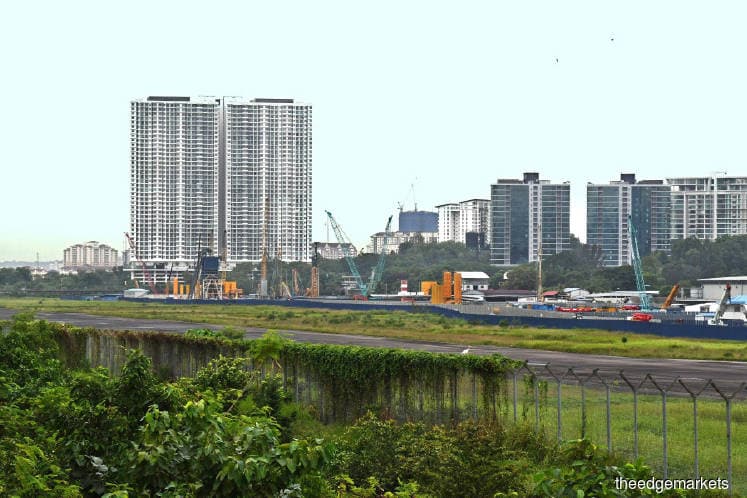
This article first appeared in The Edge Malaysia Weekly on May 6, 2019 - May 12, 2019
THE federal government is understood to have appointed an independent committee to help iron out certain details in the RM7.41 billion acquisition of 60% of the Bandar Malaysia project by IWH-CREC Sdn Bhd, sources familiar with the matter tell The Edge.
The five-member team is understood to be chaired by Datuk Ahmad Badri Mohd Zahir, the current secretary-general of the Ministry of Finance, and its members include Khazanah Nasional Bhd managing director Datuk Shahril Ridza Ridzuan, Permodalan Nasional Bhd president and CEO Datuk Abdul Rahman Ahmad, Employees Provident Fund CEO Tunku Alizakri Alias and Malaysia Digital Economy Corp Sdn Bhd CEO Surina Shukri.
It is understood that some of the confusion in the negotiations between the government and IWH-CREC stemmed from the Bandar Malaysia project being driven by the Ministry of Economic Affairs, which is headed by Datuk Seri Mohamed Azmin Ali, while the government’s stake in Bandar Malaysia is held by the Ministry of Finance, helmed by Lim Guan Eng.
“Instead of having members of the two ministries, the government has opted for an independent committee,” a source says. The Edge understands that the independent committee’s first meeting with IWH-CREC is slated for early this week.
IWH-CREC is a 60:40 joint venture between Iskandar Waterfront Holdings Sdn Bhd (IWH) and China’s government-controlled China Railway Engineering Corp (CREC). Businessman Tan Sri Lim Kang Hoo has a 63% stake in IWH while Johor state’s Kumpulan Prasaran Rakyat Johor Sdn Bhd controls the remaining 37%.
At the end of last month, at the Belt and Road Initiative (BRI) summit in Beijing, top Malaysian government officials inked a framework agreement with their Chinese counterparts, reviving Bandar Malaysia, a 196ha property project with a gross development value of RM140 billion.
“The signing ceremony in China a few weeks ago was a rushed affair, so there are still issues to be ironed out. Things were moving so fast that the deal had to be signed there and then,” says a government agency executive familiar with the matter.
Newsmen who covered the event say the signing of the framework agreement for Bandar Malaysia, which was abruptly terminated in May 2017, was not on the original agenda of the BRI summit but was squeezed in, considering the high value and huge impact of the project.
In a nutshell, the BRI is a plan mooted by current Chinese premier Xi Jinping in 2013 and involves improving China’s connectivity and cooperation with the world via the strengthening of infrastructure, trade and investment links between China and several other countries.
Bandar Malaysia is a prominent development as it is expected to draw major international financial institutions, multinational corporations and Fortune 500 companies, including Chinese giants Alibaba and Huawei, to locate their regional headquarters there.
Also on the cards is the construction of a people’s park and 10,000 affordable homes in Bandar Malaysia.
The Prime Minister’s Office (PMO), in a statement prior to the BRI summit in Beijing, said, “Bandar Malaysia will be a trailblazer in urban planning, being a transit-oriented development that will optimise the amount of residential, business and leisure space and contribute towards a greener environment by facilitating and incentivising the use of public transport over private vehicles.”
Bandar Malaysia’s revival comes days after that of the RM44 billion, 648km East Coast Rail Link (ECRL), which is set to connect Kuantan Port in Pahang on the east coast to Port Klang in Selangor on the west coast of the peninsula, much like a land bridge between the two ports. Other stops include Kota Baru, Mentakab, Kuala Klawang in Negri Sembilan, Bangi, Kajang, the federal administrative capital Putrajaya and Port Klang.
ECRL’s new price tag is 32.8% less than the previous figure of RM66 billion, largely because the plan to build a tunnel through the Titiwangsa mountain range was scrapped from the project.
“Like the ECRL, the Bandar Malaysia project should be viewed within the larger context of fostering and cementing long-term bilateral relations between Malaysia and China while ensuring that such projects bring maximum economic value to the country,” the PMO added in its revival of Bandar Malaysia release.
The Bandar Malaysia project was mooted by the Najib administration in 2011 and in December 2015, it sold a 60% stake to the IWH-CREC consortium for RM7.4 billion, with the agreement that the two companies take on the master developer’s role.
However, in May 2017, the government pulled the plug on the deal, supposedly because IWH-CREC faced difficulty with financial obligations.
The Barisan Nasional government, after cutting off IWH-CREC, had stated that as many as eight companies had registered their interest via a request for proposal in July 2017 to be the master developer of the Bandar Malaysia project, but nothing came of it.
News reports have it that the interested parties included several Chinese state-owned companies and Japanese outfits Daiwa House Industry Group and Mitsui Fudosan.
Back then, Bandar Malaysia was set to house the terminal for the multibillion-ringgit Kuala Lumpur-Singapore high-speed rail project, which was also scrapped but now looks likely to be revived in the near term.
Save by subscribing to us for your print and/or digital copy.
P/S: The Edge is also available on Apple's AppStore and Androids' Google Play.